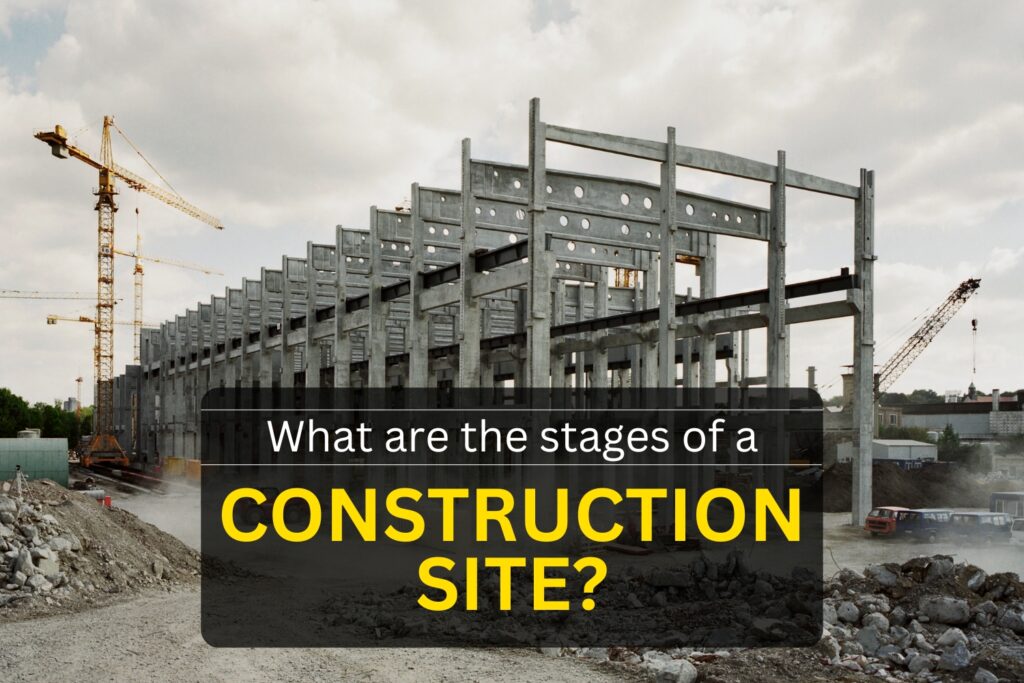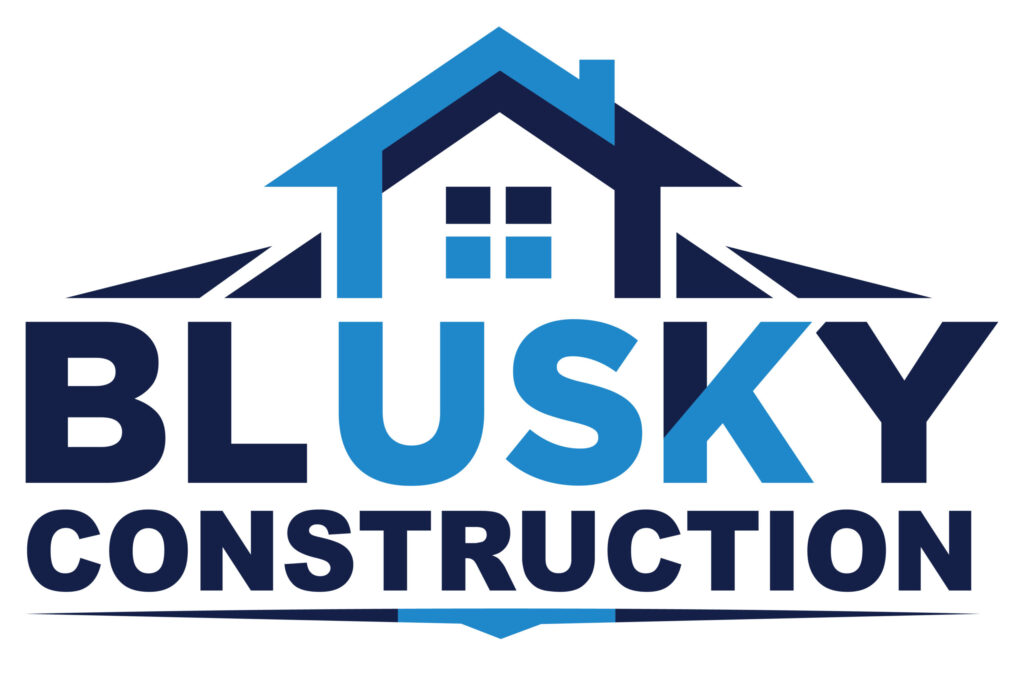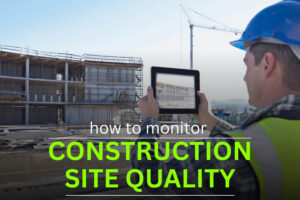What are the stages of a construction site?

The consensus is that construction begins with the advent of machinery and starts with digging. But that’s not the truth. The planning process begins far ahead of the actual event. The process involves working out budgets, timeframes, and even the best materials. If you’re working on the planning of an office building construction project or even a home, this phase will shape the remainder of the process. Do you want to see things be more efficient in the future? Make sure to take your time. It’s also the time to arrange permits and create all the necessary construction paperwork, as well as ensure your general contractor’s group. If you don’t take these steps, then you’ll face chaos shortly. It’s not just about filing paperwork but about making the necessary preparations for the next step.
Pre-Construction: All the Boring but Crucial Stuff
Before anything happens on-site, there’s plenty of work behind the scenes. There’s planning, permit design, and budgeting. All the things nobody wants to think about. If you don’t think about this aspect, it’s bound to end up hurting in the end. Seriously.
If you’re working on an office building construction project or even a tiny custom home, the processes are identical. The team works with engineers and architects, as well as general contractors, to decide what’s feasible, what’s permissible, and the amount you’re able to afford. Zoning inspections, timelines, and sometimes, interminable conversations with local authorities.
For general contracting teams, this is when coordination matters the most. Everyone’s overlapping, and deadlines start to get tight.
Site Prep and Construction Staging: Making Space to Build
The action begins. The action begins. The land has to be cleared, utility lines identified, and temporary structures set up. Think of fencing signs as well as safety zones and portable infrastructure. This is what the construction staging involves. It’s more than just stacking up materials randomly. It’s a planned, well-organized arrangement so that machines and workers can perform their tasks effectively and safely.
This is the point where your construction report begins to take shape. Everything is recorded: what’s been accomplished, as well as what was delivered and what’s left to be delivered.
For larger projects, like offices, staging could be an entire project. There are cranes, big equipment, and stricter safety regulations. For homes, it’s a little easier; however, it’s just as vital.
Laying the Foundation: Where It All Begins (Literally)
It’s the initial “real” building step. You’ll see footings being drilled for trenching, the pouring of concrete, layers for waterproofing, and any other underground plumbing or electrical work that must be completed in the early stages.
House construction steps begin right here. It’s an important step since, when the foundation is laid, any modifications become difficult and costly. There’s typically an inspection as well. Make sure that everything is steady, level, and compliant.
Weather also plays a significant role at this phase. Pouring concrete during a snowstorm? This is not a good idea. It’s not recommended.
Framing and Enclosure: It Finally Looks Like a Building
Now things start to take shape. Walls go up. Roofs get framed. Windows and doors go in. This is called “framing,” and it’s when people start saying, “Wow, it’s happening.”
In the steps to building a house, this is one of the more exciting parts because you can walk through spaces and imagine where furniture might go. But don’t get too attached yet: there’s still a long way to go.
At the same time, rough-ins for plumbing, electrical, and HVAC begin. These systems are the veins and arteries of the structure, and everything needs to be placed just right before the walls get closed up.
Interior and Exterior Finishes: Where the Magic Happens
This stage is long, detailed, and honestly, kind of messy. You’ll have insulation going in, drywall being hung, and flooring being laid. Cabinets, tiles, paint, fixtures: it all starts happening at once. It’s not glamorous; however, it is the foundation for setting everything up. Find it here, and the rest will flow much more smoothly.
On the outside, there’s siding, brick, stucco, or whatever your material is. Plus roofing, final grading, decks, balconies, and all the curb appeal stuff.
You’ll also get lots of mid-stage inspections here. Electrical. Plumbing. Fire safety. It feels like someone’s always showing up with a clipboard, and that’s a good thing.
Final Touches and Commissioning: Wrapping It All Up
Now we’re down to the last 10%, which somehow feels like it takes 40% of the time. This is where punch lists come into play. Little things like misaligned outlets, chipped tiles, and missing trim. These details get flagged and fixed.
You’ll do a walkthrough with your contractor. Maybe two. Sometimes ten. You check off what’s good and what still needs attention. Systems like HVAC, lighting, and hot water get tested. For commercial buildings, this part can involve official commissioning reports to make sure everything works as designed.
In both houses and office buildings, this is when you start thinking, “Yeah, I could live or work here.”
Post-Construction: Move-In and Maintenance Mode
The job’s done. Or is it?
General contracting teams don’t always just walk away after the handover. Good ones stick around to help with seasonal tune-ups or to resolve any issues that pop up once the building is in use.
You’ll get warranties, manuals, and maybe even some basic training on how things work. Think smart thermostats, irrigation systems, or building-wide control panels.
For construction report purposes, this is the final entry. A record that everything’s been completed, inspected, and approved.
Quick Recap of Construction Stages:
- Pre-construction: Planning, budgeting, design, permits
- Site preparation & staging: Clearing land, organizing equipment
- Foundation: Laying the base, underground utilities
- Framing & enclosure: Building the structure
- Interior/exterior finishes: Mechanical systems, finishes, details
- Final inspections & commissioning: Testing systems, punch list fixes
- Post-construction: Handover, warranties, maintenance
Wrapping It Up Without Sounding Like a Brochure
So yeah, that’s pretty much how the stages of a construction site come together, whether it’s a home or a full-blown office building. It’s not just “build and go”; every stage matters, from that first sketch to the final coat of paint. A lot of it depends on smart general contracting, solid planning, and not skipping over the boring stuff like staging or detailed reports. It’s kind of wild how much goes on behind the scenes, right? And if you’re working with a team that knows what they’re doing, not just showing up with hard hats and hope, the whole thing just runs better. Less stress, fewer delays, and something you’re proud to walk into when it’s done.
Ready to build without the chaos?
Whether you’re planning your dream home or diving into building construction, BluSky Construction has the experience, the crew, and the systems to get it done right. If you’re ready to talk next steps, no pressure, just real answers—reach out to us.



